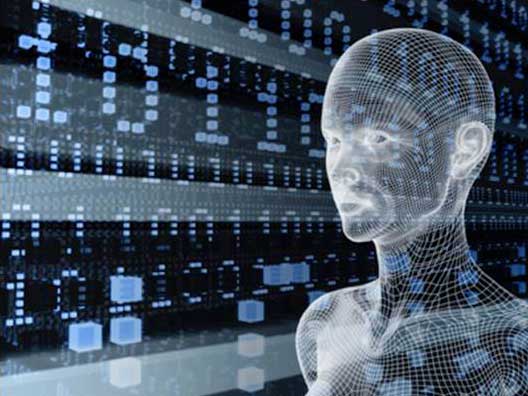The social-ecological approach humanity as an embedded part of the biosphere, depending on the generation of ecosystem services for human wellbeing, while simultaneously shaping it from local to global scales. Humanity and ecosystems are deeply linked. When considering systems of humans and nature (social-ecological systems) it is important to consider the system as a whole. The human domain and the biophysical domain are interdependent. They are complex adaptive systems that do not change in a predictable, linear, incremental fashion; they have the potential to exist in more than one kind of regime (referred to as alternate stable states) in which…
Everything is interdependent in the world; there are no things and facts that wouldn’t be connected directly or between each other. There are no pathless barriers between wild and inorganic nature, there are the laws combining the entire world in unified whole and giving rise to the objective possibility of usage in the artificially created systems of laws and principles of building of nature and its forms. Its basis is a biological relationship of a man and nature. Managing urban growth has become one of the most important challenges of the 21st century. As a result of the uncontrolled and…
Dramatic changes in the rate of world economic growth have occurred in the past because of technological advancement. Based on population growth, the global economy doubled every 250,000 years from the Palaeolithic era until the Neolithic Revolution. This new agricultural economy began to double every 900 years, a significant increase. In the current era, beginning with the Industrial Revolution, the world’s economic output has doubled as an average, every fifteen years, sixty times faster than during the agricultural era. The productivity, or output per hour of work, has quadrupled since 1947 in the United States while employment has not risen…
The next, long-term wave of innovation and growth will be formed by symbioses among the rapidly emerging nanosciences and nanotechnologies, biotechnology and life-sciences, and information and computer technology together with cognitive sciences and neurotechnologies — the ‘NBIC cluster’. Cycles of technology-induced social and economic change have accelerated in recent decades and are likely to move even faster, there is exponential rather than linear growth for some areas of technological progress.

Our economic model is currently hitting a brick wall. Industrial development has brought enormous economic growth, but the linear economic model is unsustainable. Resource-scarcity risks are increasing, leading to more volatile prices and supply chains. Our society is headed for global overshoot and collapse. Steering away from this course requires breaking the current bond between prosperity and material consumption, or ‘decoupling’. In a circular economy, the industrial system is restorative or regenerative by design. Within the circular economy new business models are developed that reduce the need for virgin raw materials. This is accomplished by rethinking how production chains can…
Nanosciences, nanotechnologies, materials and new production technologies (NMP) have the potential to contribute significantly to the move from a resource intensive economy to a knowledge-intensive economy. They will lead to new applications, new business models, new products, new production patterns, new services, new processes, substitution of resources, higher material and energy efficiency and changes in technological competitiveness. These effects may bring along significant growth of value added, employment or trade balance in the European industry. E.g. new job opportunities will be provided, existing jobs will be protected, but also some may disappear through substitution.
At the core of the challenge we face is the inevitable uncertainty of dynamic combination human-natural systems. Rapid modifications of biophysical systems have the potential to trigger regime shifts —abrupt and irreversible changes—that will have significant consequences. It is clear that the likelihood of regime shifts is higher in ecosystems where humans have reduced resilience by modifying biogeochemical cycles, altering hydrological regimes, reducing biodiversity, and changing the magnitude, frequency, and duration of disturbance regimes. We know these are hard problems to solve, but they are by no means impossible. A new understanding of our relationship to the natural and designed…
The lifeblood of cities, the city dwellers, who have a life of their own and who introduce human fuzziness and socio-cultural variables, create a gigantic scenario of human possibilities and achievements. Just like their inhabitants, cities must constantly reinvent themselves in order to develop and keep themselves alive. They are alive with movement. A rapid flow of exchange is facilitated by a meshwork of infrastructure connections. Transport grids, building complexes, information and communication technology, social networks and people form the bones, organs, muscles, nerves and cell tissue of a city. City districts grow and change their character, people change their…
The old urban crisis, characterized by the decline of central cities, still has not been addressed adequately. Business districts shrank; economic, political, and cultural centers diminished in size and function; once-fashionable residential neighborhoods fell into decline; and deterioration, crime, and emerged in despair and poverty. Communities today face a complex range of social, environmental, and economic challenges. There is growing debt at household, government and corporate levels, and wages are not keeping pace with the cost of living. The gap between the rich and the poor is becoming bigger, not smaller. Many communities are seeing that new ways of addressing…
As the fastness of modern life in megalopolises creates the definite standards for vital space, one of the most important criteria of urban quality is its functionality and the ability to anticipate and prepare for changes and potential threats. Never before have so many people been exposed to such a hyper scale of impending ecologic and resources dilemmas. The capacity for catastrophic geo-political systems failure are the subjects of growing international awareness.

Recente reacties